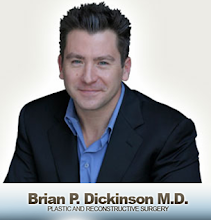
Chapter 3: Mammography of the Surgically Altered Breast
The Mammogram:Basic Principles:
Compression of the breast is important to separate structures, improve contrast and resolution, and minimize x-ray dose.
Standard mammogram two views of each breast:
The craniocaudal (CC) view is the projection from top to bottom.
The mediolateral oblique (MLO) view is the projection from side to side with the compression plates and x-ray tube angled obliquely parallel to the pectoralis major muscle to optimize imaging of the axillary tail.
By convention, the projection markers are placed toward the axilla in each view.
Signs of malignancy include:
A speculated lesion and calcifications that may be described at casting, granular, pleomorphic, or linear.
Other findings may include architectural distortion (speculations without central density), mass (which is usually ill defined but may be well defined), or an area of tissue asymmetry, not forming a three dimensional mass.
Studies:
A screening study is that which is performed on an individual in whom no disease is suspected.
A diagnostic study is that performed on an individual with physical signs or symptoms of breast cancer or whose screening mammogram results were abnormal.
Ultrasound is usually suggested when a cyst is a diagnostic possibility or to guide interventional procedures such as aspiration, biopsy, or abscess drainage.
Benign Biopsy Changes:
Dystrophic Calcifications
Spherical Calcifications
Imaging the Conservatively Treated Breast:
Breast conservation therapy following lumpectomy or segmentectomy with radiation therapy and axillary node dissection presents unique challenges to the radiologist who must discriminate treatment changes from recurrence and monitor for metachronous lesions.
Mammography and physical examination are complementary and should in all cases be used as first-line follow-up methods.
To establish a post treatment mammographic baseline, a unilateral examination is obtained of the post treatment breast at approximately six months after the initial diagnosis when surgery and radiation are completed.
Imaging the Postmastectomy Breast without Reconstruction:
In practice, there is typically insufficient tissue for mammographic evaluation, and standard compression mammography requires some amount of mobile tissue.
Any recurrence in the skin or chest wall are appreciated by physical examination. CT-scan or ultrasound may be helpful in evaluating any possibility of recurrence.
Imaging the Postmastectomy Breast with Implant Reconstruction:
There is usually little to no residual breast tissue after mastectomy. Placement of an implant obscures native tissue, only a small rim of native tissue remains. Other imaging modalities may therefore be used in conjunction with mammogram.
Imaging the Postmastectomy Breast with Autogenous Reconstruction:
The autogenously reconstructed breast involves transfer of tissue as a myocutaneous flap on a pedicle, as a free flap attached by microvascular techniques, or a combination.
There is no clearly established protocol for imaging the autogenously reconstructed breast. The reconstructed breast mound appears primarily lucent due to the fatty tissue.
The imaging is more useful in evaluating the more common occurrence of fat necrosis, which may present as a palpable abnormality and is a benign process. Benign dystrophic calcifications or lipid cysts may appear mammographically.
Imaging the Implant-Augmented Breast:
The breast, augmented with saline, silicone, or saline-covered silicone (double-lumen) implant, is an important imaging topic because the patient population who were in their 20s and 30s during the 1970s have now entered the mammographic screening population.
The normal implant appears as a radiodense oblong structure that may be subglandular or subpectoral. The margins are smooth. If the implant is double lumen, in many cases the density differences between the outer saline and inner silicone components makes these compartments radiographically visible.
Mammography may detect some proportion of implant ruptures, but only when loss of integrity results in some change in shape or volume that can be projected in tangent to the dense implant itself.
Intracapsular ruptures of silicone are mammographically occult.
Saline implant ruptures are typically clinically apparent as abrupt decompression and usually do not warrant further imaging.
Capsular calcification (unrelated to implant integrity) or a round configuration of the implant suggesting capsular contracture may also be observed mammographically.
Supplemental views of the breast have been developed to optimize imaging of native glandular tissues to screen for breast cancer. Displacement views developed by Eklund involves pushing back the implant while pulling forward the native tissues with sufficient diagnostic compression.
Native tissue may be obscured from the mammogram depending upon implant plane and the presence of capsular contracture.
Imaging the Postexplantation Breast:
Mammographic findings after implant removal are varied.
Serous fluid may fill the cavity and give the appearance of the implant itself. As this pocket matures and fibroses, masslike density with or without coarse calcification may develop. When the implant is removed without complication by rupture, the are may heal completely without identifiable scarring.
Postreduction Mammoplasty Breast:
Reduction mammoplasty is a commonly performed procedure:
Either:
To achieve breast symmetry (typically after surgical management of a contralateral breast cancer has resulted in breast asymmetry)
To relieve macromastia.
Mammogram should be obtained pre-operatively in the age-appropriate patient so an occult cancer can be excluded.
Once the procedure is done, a follow-up mammogram should be obtained in 1 year to reestablish the new mammographic baseline appearance.

















































